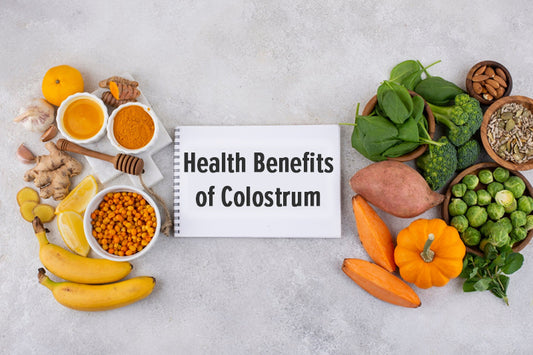More and more people are following a calorie-deficit diet to lose weight and improve their health. Simply, it involves consuming fewer calories than your body requires in a day. This nutrition strategy is famous for making the body use its stored energy, like fat, which leads to losing weight.
What are Calories?
Before we learn more about calorie-deficit diets, it's important to understand what calories are. Calories fuel our bodies, powering vital functions like breathing, digestion, and muscle movement. The balance between the calories we consume and those we burn is crucial, especially when weight loss is the goal.
Calorie Deficit Defined
A calorie deficit occurs when you consume fewer calories than your body expends. This imbalance prompts the body to utilize stored fat to meet its energy needs, supporting weight loss. It's a fundamental principle of shedding pounds, emphasizing the significance of controlling calorie intake and enhancing energy expenditure.
Estimating your daily calorie needs involves considering factors like age, weight, activity level, and muscle mass. This personalized approach ensures that your calorie deficit aligns with your body's unique needs.
Benefits of Calorie deficit diet
While weight loss is a primary outcome of a calorie deficit, its effects go beyond the number on the scale. Eating fewer calories can have positive effects on health. It can make the body more sensitive to insulin, reduce inflammation, and lower the risk of heart problems. It's not just about shedding pounds; it's about optimizing overall health.
Consider these things
Energy Balance and Weight Loss
The energy balance equation is simple: Energy In (calories consumed) must be less than Energy Out (calories expended). When you burn more calories than you eat, your body uses its stored energy, mostly body fat, for fuel. This is where the concept of a calorie deficit becomes tangible and practical.
Metabolism's Role
Metabolism plays a crucial role in the calorie deficit process. Your body burns calories even when you're resting to maintain basic functions like breathing and developing new cells. This is called your basal metabolic rate (BMR).
Additionally, physical activity and the thermic effect of food contribute to total energy expenditure. When you create a calorie deficit, your body burns stored fat for energy, which helps you lose weight.
Adaptations to Caloric Deficit
Your body can adapt to changes in calorie intake. When you eat fewer calories than you burn, your body may slow down its metabolism to save energy. This adaptation can make weight loss efforts plateau over time. However, adding regular adjustments to calorie intake and exercise routines can help counteract these adaptations, ensuring continued progress.
Nutrient Density Matters
While creating a calorie deficit is central to weight loss, the quality of the calories consumed is equally important. Prioritizing nutrient-dense foods ensures that the body receives essential vitamins, minerals, and other micronutrients necessary for optimal functioning. A well-balanced diet not only supports weight loss but also promotes overall health and well-being.
Potential Challenges
Starting on a calorie-deficit diet may present challenges such as hunger, cravings, and wavering motivation. Overcoming these obstacles involves setting realistic goals, adopting healthy coping mechanisms, and cultivating a supportive environment. Acknowledging and addressing these challenges is integral to long-term success.
Sample Meal Plan
Creating a meal plan while in a calorie deficit is more than just cutting your overall calories. It's about choosing nutrient-rich foods that support your body's functions and promote well-being. Here's a sample meal plan that goes beyond counting calories and focuses on balanced eating and nutrient-dense choices.
Breakfast
- Scrambled eggs with spinach and tomatoes: Packed with protein, vitamins, and minerals, eggs are a great way to start the day. Spinach adds fiber and essential nutrients, while tomatoes contribute antioxidants.
- Whole-grain toast: High in fiber, whole-grain options provide sustained energy and support digestive health.
- Add a serving of fresh fruit, such as berries or an apple, to your meal for a touch of sweetness and a boost of vitamins.
Mid-Morning Snack
- Greek yogurt with almonds is a healthy snack that is good for your gut and leaves you feeling satisfied.
Lunch
- Grilled chicken or tofu salad: Chicken or tofu is good for muscles, and veggies give fiber and vitamins.
- Quinoa or brown rice: These whole grains contribute complex carbohydrates for sustained energy.
- Healthy dressing: Olive oil's good fats aid nutrient absorption, while lemon adds flavor without calories.
Afternoon Snack
- Sliced cucumber with hummus: Cucumbers are hydrating, and hummus provides a combination of protein and healthy fats.
Dinner
- Baked salmon or a plant-based protein source: Salmon is rich in omega-3 fatty acids, supporting heart health. For plant-based options, consider lentils or chickpeas for protein.
- Steamed or roasted vegetables (broccoli, carrots, bell peppers): Colorful veggies supply a range of vitamins and minerals.
- Sweet potato or quinoa: These complex carbohydrates round out the meal, providing additional nutrients and fiber.
Evening Snack (if needed)
- A small bowl of mixed berries is a healthy and satisfying option for satisfying sweet cravings. They are low in calories and high in antioxidants.
Additional Tips
- Stay Hydrated: Drink plenty of water throughout the day to stay hydrated and support overall health. Herbal teas or infused water add flavor without extra calories.
- Portion Control: Pay attention to portion sizes to avoid overeating, even with nutrient-dense foods. Use smaller plates to create a visual cue for portion control.
- Mindful Eating: Practice mindful eating by savoring each bite and paying attention to hunger and fullness cues. This fosters a healthy relationship with food.
- Variety is Key: Rotate your food choices to ensure a diverse range of nutrients. Different-colored fruits and vegetables, various protein sources, and whole grains contribute to a well-rounded diet.
- Meal Timing: Consider spreading your meals and snacks throughout the day to maintain energy levels and prevent excessive hunger.
Conclusion
A calorie deficit diet is a way to lose weight and improve your health. By understanding how your body uses calories and how much you need to eat, you can overcome challenges and make lasting changes to your diet and lifestyle. This can lead to a healthier and happier life. Remember that small, sustainable changes are the best way to succeed.






